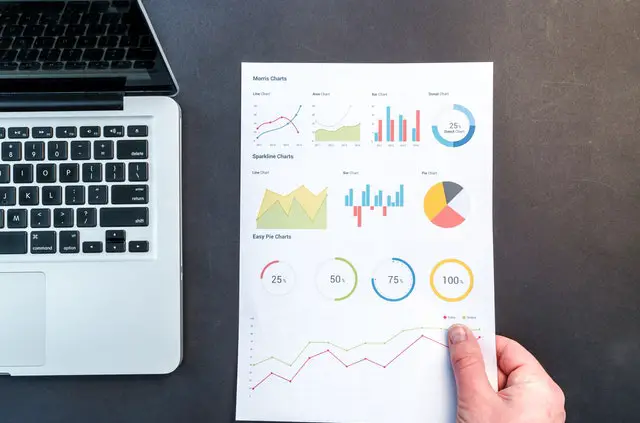Who said you cannot be lazy and still make money? This is what a lazy portfolio enables you to do. With lazy portfolios, you can build your wealth easily and with little to no effort.
What is a lazy portfolio?
A lazy portfolio is an investment strategy, which usually is an exchange-traded funds (ETF), you can invest your cash in at a fixed percentage. For example, you can invest 70% of your cash in one ETF and 30% in another ETF.
These portfolios are referred to as lazy because you don’t need to actively manage them and they require very little of your attention and effort. You don’t need to engage in any active trading or check your stocks every other day or pay some hedge fund manager who can’t beat the market to manage your cash.
They are a “buy and hold” strategy, which looks to achieve financial independence and security. Simply put, a lazy portfolio is a passive investment strategy.
What kind of performance can I expect from a lazy portfolio?
Lazy portfolios are like self-driving cars, once you set up your portfolio that’s it. You sit down and watch the magic happen. Additionally, with lazy portfolios, you can avoid making mistakes and poor decisions.
So what kind of performance can I expect from a lazy portfolio?
Most lazy portfolios do well in most market conditions. They can even outperform professional investors. But if want your lazy portfolio performance to rise, you need to diversify your portfolio with equity security and fixed-income. By doing this, you’ll limit your losses when the market is performing poorly.
How to start building your own lazy portfolio
To help you build a lazy portfolio here is what you can do:
1. Set up an investment account
If you don’t have a 401k plan, to start investing you’ll need to set up an investment account. If you have never opened one before, open an Individual Retirement Account.
Once you have set up your investment account, it’s time to figure out where to put your money.
2. Work out your asset allocation
You need to invest in more than stocks if you want to build a good portfolio. Consider investing in both stocks and bonds.
When it comes to asset allocation, you need to work out what percentage of stocks and what percentage of bonds should make up your portfolio.
One rule of thumb for asset allocation you can use is the age rule. The principle behind this rule is that when you subtract your age from 100, the answer you get should be the percentage that goes into stock investing.
For example, if you are 40 years old, deduct that from 100 and you’ll remain with 70. So you’ll allocate 70% assets in stocks and 30% in bonds. However, you can choose to do it differently.
If you can’t figure out how to allocate your assets, there are a number of tools that can help. You can visit Personal Capital, a website that tracks investments. It can show you how to allocate your assets.
3. Select a couple of index funds
Select some index funds. Keep in mind that index funds are not actively managed, so this is not something you’ll need to worry about.
Index funds are made up of stocks and bonds, and what they do is match a stock index based on its performance. So basically, you don’t need to put much effort toward maintaining or managing your portfolio.
The reason index investing is so attractive is because of its low operating costs, low fees, and high returns over time.
4. Create your lazy portfolio
Once you have decided on what index funds to invest in, it’s time to create your lazy portfolio. Bear in mind that you can start with one or more funds. But if this is the first time you are investing in index funds, consider starting with three funds.
There are several lazy portfolios, but the easiest one to create is the Rick Ferri’s two-fund portfolio, which uses two Vanguard funds: Vanguard Total Bond Market Index Fund and Vanguard Total World Stock Index Fund.
This fund uses the 60/40 rule to allocate resources. 60% goes into stocks and the 40% into bonds.
The other type of portfolio that is easy to create is the three-fund lazy portfolio. This fund also uses the 60/40 rule, but unlike the two-fund lazy portfolio, it suggests investing in the stock market index funds and the international index funds.
There are three types of three-fund lazy portfolios:
- Taylor Larimore’s three-fund portfolio
- Rick Ferri’s lazy three fund portfolio
- Taylor Larimore’s three fund portfolio
Other lazy portfolio options include:
-
Bill Schultheis’s “Coffeehouse” portfolio
-
David Swensen’s lazy portfolio
- Rick Ferri’s four core portfolio
- William Bernstein’s “Coward’s” portfolio
When you create your lazy portfolio make sure it is simple and balanced.
5. Contribute and Rebalance
Once you have bought your index funds and you are happy with the asset allocation, now you need to work out how much you will be putting into your investment account.
With a 401k plan, since it is sponsored by your employer and the money is tax-deferred, your investments will grow over the years. Since every month, a percentage of your paycheck goes into your 401k plan, it means that you are able to make monthly contributions towards your investments.
If you have an investment account, you need to figure out how much you want to put into your account each month. Remember, the more you contribute to your account, the more your investments will grow.
With lazy portfolios, you don’t need to keep checking to see how it is performing. Leave it alone and avoid obsessing over it. However, make sure to check every year and rebalance.
What this means is that you want to keep your portfolio balanced. For example, if you have invested 60% in stocks and 30% in bonds and you find that the stocks did well that year, you’ll need to re-balance that such that it matches your initial asset allocation.
So instead of putting more money into stocks, start putting the money into bonds. After some time, your portfolio will balance out.
Final Remarks
A lazy portfolio is a rewarding investment strategy for investors who are looking to invest long-term (i.e. 10+years). It also a good strategy for someone who is looking to create a good nest egg for retirement, as long as they start investing early.



